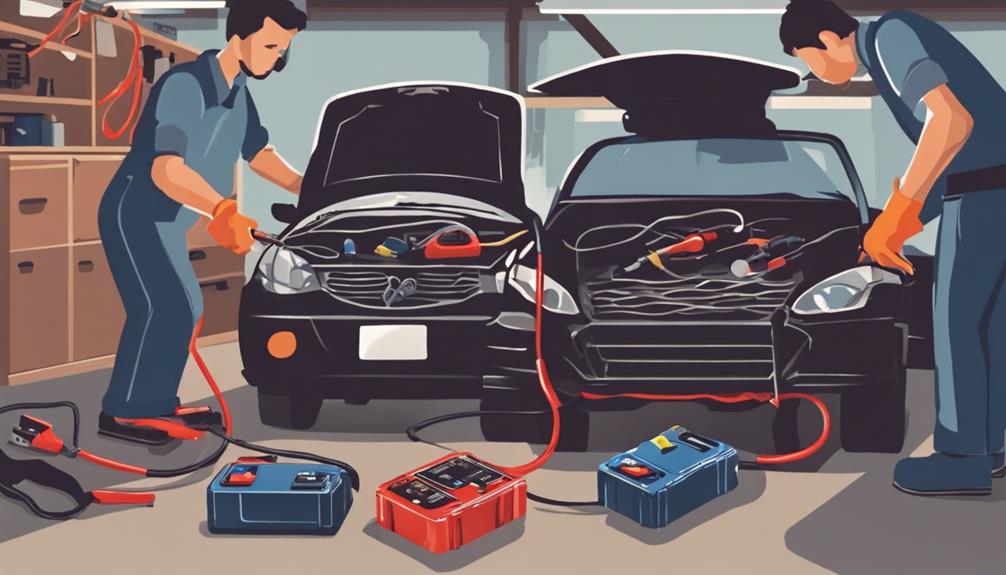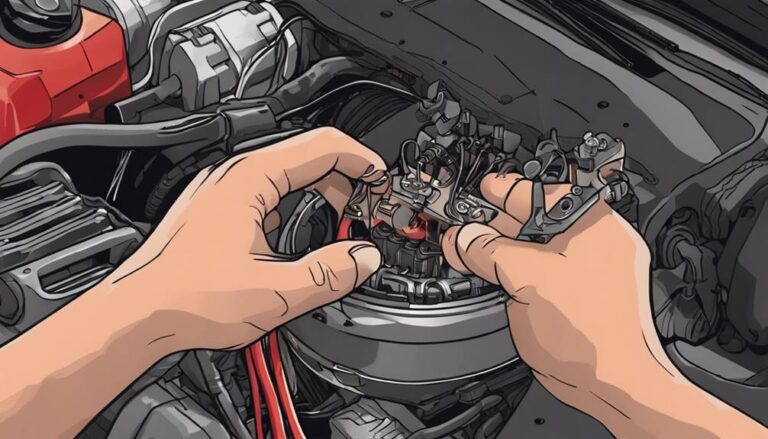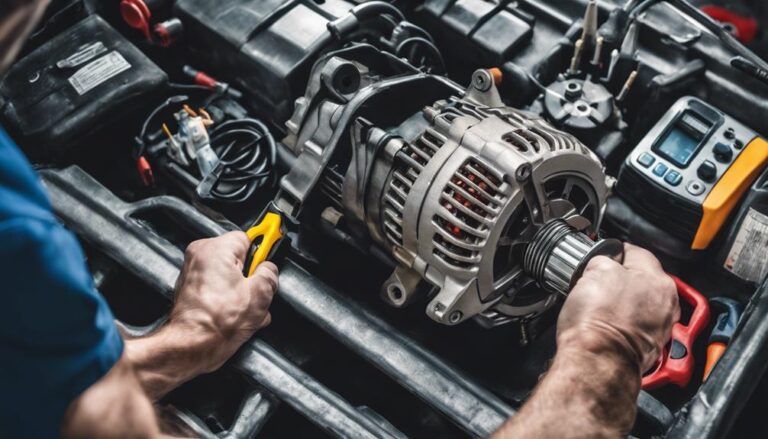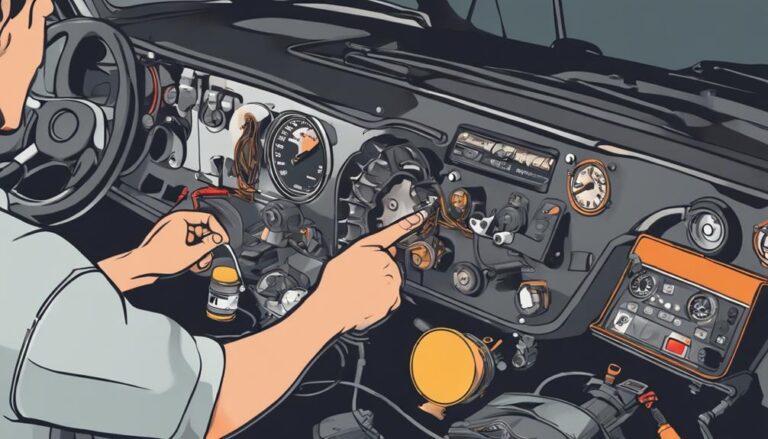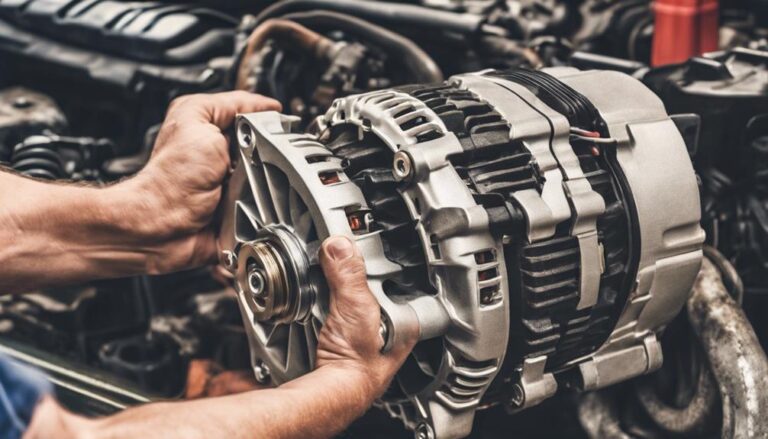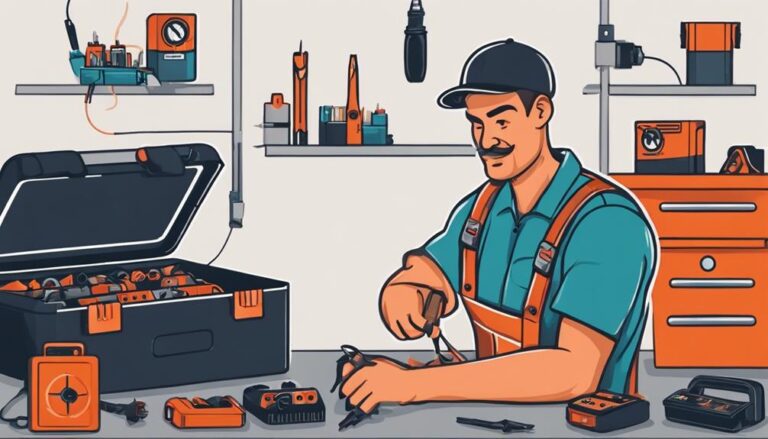Troubleshooting Starter Problems: 5 DIY Solutions
Did you know that a significant number of car breakdowns are due to starter issues?
Imagine being able to troubleshoot and potentially fix these problems yourself.
By exploring the 5 DIY solutions outlined in this guide, you can equip yourself with the knowledge and tools needed to tackle starter malfunctions head-on.
Stay tuned to discover practical tips that could save you time and money when dealing with troublesome starter problems.
Key Takeaways
- Address starter issues promptly to prevent further complications.
- Maintain clean battery connections for optimal electrical flow.
- Check and replace faulty starter solenoid for proper starting function.
- Consider alternative methods like hitting or push starting for emergency situations.
Identifying Symptoms of a Bad Starter
When troubleshooting starter problems, identifying symptoms of a bad starter can provide essential insights into the underlying issue. A clicking noise when you turn the key is a common indicator of a bad starter. This clicking noise often suggests that there's a critical electrical contact or worn-out brushes within the starter assembly.
If you notice slow cranking of the engine, it may be a sign of starter issues. In some cases, the engine mightn't start at all, which could point towards a starter failure. It's important to take into account the current flow within the starter system as any interruptions can affect the starter torque, leading to starting problems.
Keep an eye out for these signs to address any potential starter issues promptly and ensure your vehicle starts reliably.
Cleaning Battery Connections for Better Contact
To guarantee peak starter performance, addressing the cleanliness and connection quality of the battery terminals is paramount. Corrosion on the battery terminals can disrupt electrical flow to the starter, causing starting issues. By cleaning the positive battery connection, you can improve contact and potentially resolve starter problems. Disconnecting and cleaning the positive terminal is vital as it helps eliminate resistance and guarantees proper current flow. A faulty positive connection can lead to starter failure, preventing the engine from starting. Reconnecting the cleaned positive connection is a simple DIY solution to enhance starter performance.
| DIY Solution | Description | Benefit |
|---|---|---|
| Clean Positive Terminal | Remove corrosion from the positive terminal for better contact | Improves electrical flow |
| Inspect Battery Cables | Check for any damage or wear on the cables | Ensures optimal current transmission |
| Apply Anti-Corrosion Spray | Use to prevent future corrosion buildup | Extends battery terminal lifespan |
Checking and Replacing Starter Solenoid
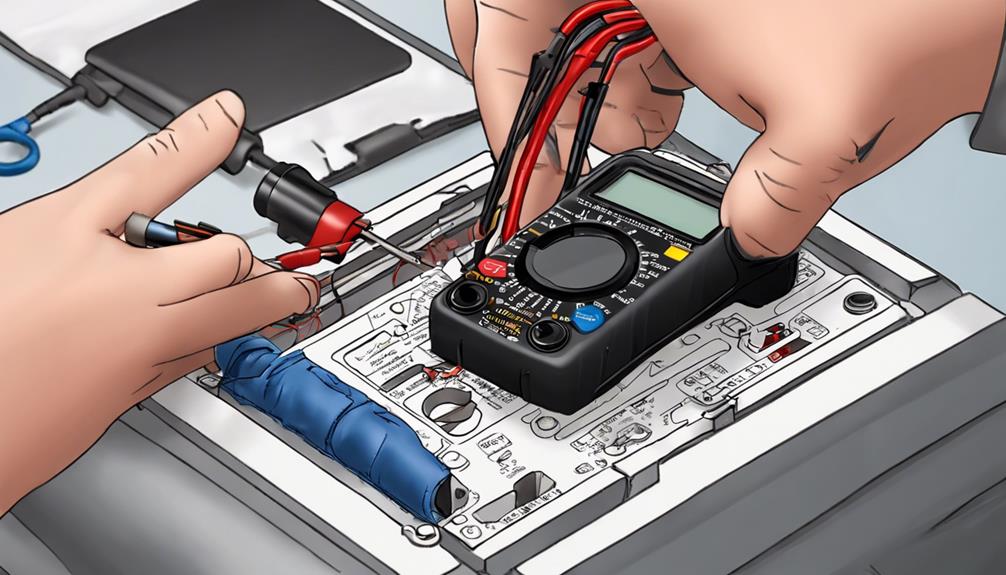
Regularly inspecting the starter solenoid is important for maintaining the best vehicle performance and addressing potential starting issues. The starter solenoid serves as a vital relay that controls the flow of electricity to the starter motor, acting as a bridge between the ignition switch and the starter motor.
If you notice a clicking sound when turning the key or experience intermittent starting problems, it could indicate a faulty starter solenoid. To diagnose this issue, testing the starter solenoid is essential. If testing confirms a faulty starter solenoid, replacing it can restore proper starting functionality to your vehicle.
During the installation process, make sure that the new starter solenoid is securely in place and all connections are properly tightened. Once installed, testing the new starter solenoid is important to verify that it functions correctly and allows for smooth electricity flow between the ignition switch and the starter motor.
Impact Method: Hitting the Starter
Switching from checking and replacing the starter solenoid, striking the starter can be a practical method to reestablish contact between internal components and troubleshoot potential starting issues. When dealing with starter problems, tapping the starter can help address various issues related to the starter motor.
Here's what you need to know:
- Tapping Technique: Using a hammer or a piece of wood to tap the starter is a common way to troubleshoot problems associated with weak springs, worn brushes, or other contact issues within the starter motor.
- Diagnostic Approach: When you encounter situations where turning the key results in no noise or just a single click, tapping the starter can be a quick way to determine if poor contact is the root cause of the problem.
- Temporary Solution: By tapping the starter, you may be able to get the vehicle to start temporarily. However, it's crucial to consider this as a temporary fix and plan for further repairs to guarantee long-term functionality of the starter system.
Manual Transmission Push Start Option

When starting a manual transmission vehicle without using the starter motor, engaging a gear while rolling the car is known as push starting. This method can be handy in emergency situations or when the starter motor malfunctions.
To push start, make sure the ignition is on, depress the clutch, and get the car rolling to engage the engine. Coordination between the pusher(s) and the driver is vital to gain enough momentum for the engine to start. It's important to practice caution and follow safety measures when push starting a manual transmission car to prevent accidents.
Remember to choose an appropriate gear, such as second gear, for push starting. Make sure the area is clear of obstacles and pedestrians. With proper coordination and attention to safety measures, push starting can be a useful technique when the starter motor fails or in emergency scenarios.
Frequently Asked Questions
How Do You Troubleshoot a Starter Problem?
When troubleshooting a starter problem, inspect battery voltage, ignition switch, solenoid connection, starter relay, starter motor, wiring harness, neutral safety, engine ground, and corroded terminals. Confirm proper connections to the starter solenoid for smooth operation.
How Do You Start a Car With a Bad Starter?
If dealing with a bad starter, consider push starting or utilizing a solenoid bypass to get your vehicle moving. These methods can bypass the faulty starter and get you back on the road quickly and safely.
Can You Fix a Starter Motor Yourself?
You can attempt starter replacement yourself, but be cautious. DIY repairs involve checking electrical connections, starter solenoid, ignition switch, battery voltage, starter relay, engine cranking, and starter noise. Follow troubleshooting tips carefully to avoid further issues.
How Do You Test if a Starter Is Bad?
To test if a starter is bad, check for voltage issues, listen for strange sounds, examine the ignition switch, inspect battery connections, assess the starter relay, understand the solenoid function, and detect starter grinding or clicking. Consider starter wiring and potential replacement options.
Conclusion
To summarize, troubleshooting starter problems is like peeling back the layers of an onion – revealing hidden issues one by one.
By following the DIY solutions outlined in this article, you can peel away the complexity of starter malfunctions and get your vehicle back on the road in no time.
Remember to approach each step methodically and with patience to uncover the root cause of the problem.
Happy troubleshooting!

